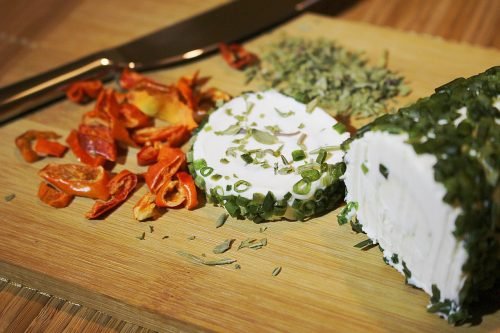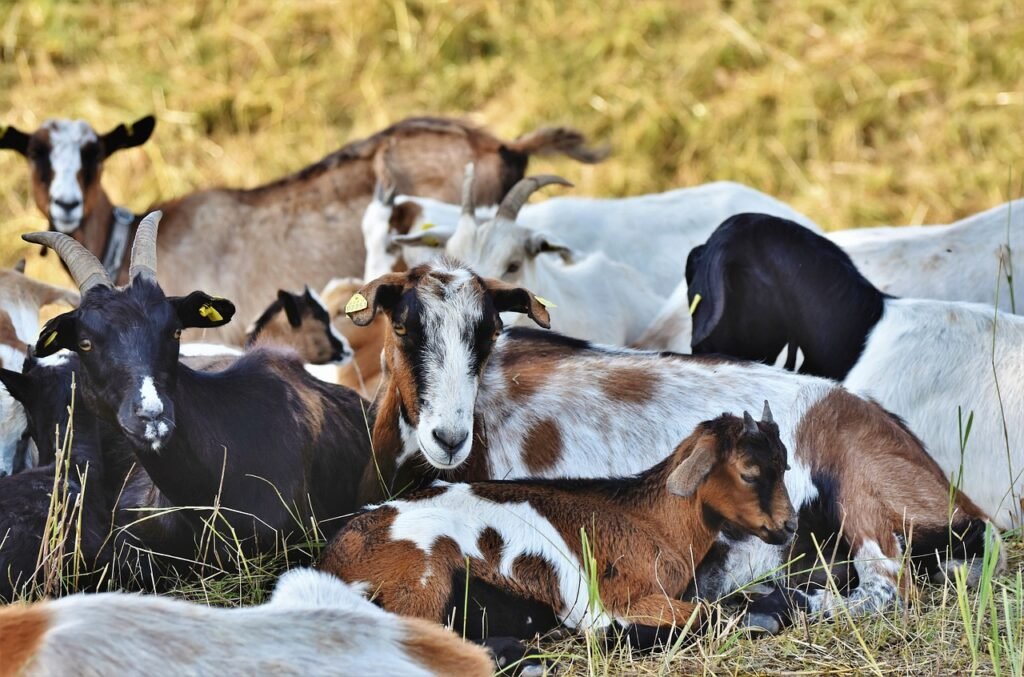5 Things You Need to Know Before Raising Goats
When I was in college we studied and performed experiments at our college research farm. We did everything from soil testing to castrating pigs (I’m traumatized from that lab). In one of our classes, our professor took us to a goat farm. That is when I fell in love with goats. They are like having a pet dog, but you can milk them, and they will keep your weeds at bay. The farmer that owned these goats made cheese and gave the entire class samples. Oh my gosh, that was the best goat cheese I’ve ever tasted. Thus began my dream to raise goats.


For the Love of Goats
For the last 15 years we have lived in a neighborhood with backyards on the smaller side, so goats have been out of the question. I have yet to convince my mom and stepdad to add a goat to their herd of horses. Due to my husband’s job, we are now having to relocate. Our family has decided we would like our next home to have some acreage. Needless to say, I will finally get my wish of having goats! We will primarily have them as pets, but we hope to one day expand our herd for milking and goat cheese! Hence, I began the research and I’ve come up with my own beginner’s guide for first time goat owners. Or at least I’ve compiled a list of things you should know before you venture into being a proud owner of goats.
Shelter and Containment
Next on the list, is shelter and containment. I don’t necessarily want them to roam freely 24/7. Oh, imagine the damage they could do. We prefer a 6ft privacy fence for our yard perimeter but, if that is not your case you can always install sheep and goat fencing, such as the Starkline Electric Fencing Kit. When I’m not home or on vacation we don’t need them eating the house. So, we decided to go with a large containment fence within our enclosed backyard. In the case that I cannot let them out for longer periods of time, they will have plenty of room to be comfortable. Adding climbing boxes or ramps will help enrich their environment while in confined quarters as well. After much thought we decided to go with the Giantex 26ft X 10ft yard. Within the yard they will need protection from wind, rain, cold and heat with proper ventilation. The rule of thumb for shelters is that you need approximately 8-10 square feet per animal. There are many sheds and other mobile buildings that can be used as a shelter. The size really depends on your herd size.


Herd Size or Land Size?
My first thought was, how many goats can I have? Well, this depends on many factors. Most importantly, how many acres of land do you have? Second, do you plan to supplement with feed? Third, size and breed do matter. We will be selecting from the breeds ideal for milking such as Nubians, Nigerian Dwarf, Sannen, or Lamancha. Lastly, they are herd animals so you should be prepared to have no less than three. You can keep a single goat, but it is best to have another pet to socialize with them. In my case we will probably have an acre of land, so I don’t want things to get out of hand. Goats are cute after all. We will plan to supplement with feed as well, because we do like to spoil animals. If we decide on a smaller breed of goat, we can roughly have up to 8 goats. On the other hand, if we go with a larger breed, we will have to have no more than 8. Breed is greatly a deciding factor.

Goat Diets
Speaking of eating the house, goats are notoriously known for eating anything and everything. With a proper diet that can somewhat be controlled. I would still protect any precious gardens or landscaping from them. You just never know when they will need a snack. Their diet depends on life stages, male, female, pregnancy and lactation. Since we are going to start and will baby steps in our goat venture. I will probably stick with females at first. We are nowhere near ready for breeding. Baby goats or also known as kids, will need a diet that consists of high-quality hay and for the first 2-4 weeks will need a bottle-feeding regimen as well. Make sure you can fit bottle feeding into your schedule or you may choose to go with kids that are already weaned. The hay diet will be roughly 80% of their diet and need about 5% of grains along with whatever hay, grass, or weeds they forage. Be sure to manage the grains at about 5% because too much can negatively affect their health as well as introducing new foods too rapidly. Kids begin eating hay at just a few days old, so be prepared and make sure they have access at all times. Also, we already know treats and snacks are a part of our backyard farm. Select fruits and vegetables can be offered as well. For the kids we will feed a starter grain and for the adults we will free feed Purina All Life Stages Goat Feed. With an addition to mineral blocks or supplements that should be available at all times for additional nutrients.
Herd Health
Health of your herd does greatly depend on diet, but it also relies greatly on hoof, coat, preventative care and hygiene. As the good ole days of over-the-counter livestock medications are dwindling. It would be good to be established with your local large breed veterinarian. For a healthy herd you can begin with vaccinating kids, preferably before castrating males. They will need boosters 2-3 weeks apart. Your adult goats will also need a vaccine and deworming schedules, so please get with your local veterinarian for their protocols. If you have a horned variety of goats, it is best to de-bud them around a week old if planning to do so. It will be less stressful for you and the kid, and a cleaner healing process. Coat and hoof care is also important, as you must keep them clean of debris, feces and lice or mites. Confined goats will need hoof trimming probably every 6-12 months and some species of goats may require shearing a few times a year. Inspecting your herd regularly will ensure that you stay on top of these things and receive care or medical attention in a timely manner. Remember, goats can live up to 18 years so, this is quite a commitment and one you should be well prepared for.

Basic Supplies
Lastly, you may need a few basic supplies to have before acquiring goats. Obviously, you will need a water trough that has fresh water readily available at all times. A hay feeder is necessary to keep it clean and dry since that is the bulk of their diets. Unless you plan on hiring a professional hoof trimmer you may want to have a file and trimmer on hand, but please make sure you know what you are doing before attempting this task yourself. Take a lesson from a fellow goat owner or professional. Curry combs and brushes for removing matts, debris and other things from their fur are essential in their grooming and care also. Leads and halters will come in handy to have some control over them such as when putting them in their pen or moving them. You may consider having a goat first aid kit for those mishaps when they are frolicking around and end up with scrapes and cuts. Obviously, let your veterinarian decide the seriousness of any injuries and further care, but some gauze, vet wrap, disinfectant and gloves will be useful in keeping it clean until you are able to seek veterinary care. Kidding supplies like bottles, towels, iodine, and sterile scissors will be necessary if you plan on breeding. You will have to do more research in that area.
Now that I’ve done some groundwork, I feel much more prepared to integrate a herd of goats with my flock of chickens. Now that I have more than one farm animal and a garden, does that make me an official farmer? I’m so excited to begin this part of my backyard farming
Happy Yard-ing
